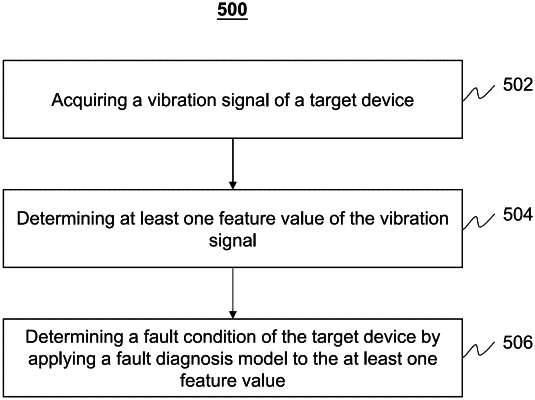| CPC G06N 3/08 (2013.01) [G01M 13/00 (2013.01); G01R 33/28 (2013.01); G06N 3/045 (2023.01); G06N 3/047 (2023.01); G16H 40/40 (2018.01)] | 20 Claims |

|
1. A system for fault diagnosis, comprising:
at least one storage device including a set of instructions; and
at least one processor configured to communicate with the at least one storage device, wherein when executing the set of instructions, the at least one processor is configured to direct the system to perform operations including:
acquiring a vibration signal of a target device;
determining at least one feature value of the vibration signal; and
determining a fault condition of the target device by applying a fault diagnosis model to the at least one feature value, wherein the fault diagnosis model is obtained by training a preliminary model at least including a first component, the first component including a plurality of stacked Restrictive Boltzmann Machines (RBMs), and the training of the first component including an iterative operation including one or more iterations, an iteration of the iterative operation including:
determining, based on each of a plurality of training samples, an energy level of each of a plurality of neurons in an updated first component determined in a previous iteration;
determining, among the energy levels of the plurality of neurons in the updated first component, a lowest energy level;
determining whether the lowest energy level exceeds a threshold energy level; and
in response to a determination that the lowest energy level does not exceed the threshold energy level, determining that a first termination condition is not satisfied, and further updating the updated first component to be used in a next iteration.
|